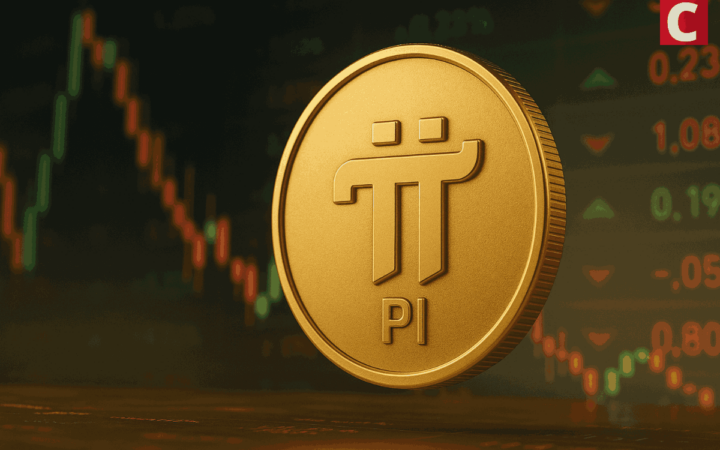Australia extends crypto regulations to stablecoins and tokenized assets
Australia is tightening its grip on the crypto industry as regulators move to redefine what falls under financial oversight.
- Regulators in Australia have updated guidance to apply financial laws to a wider range of digital assets, including stablecoins, staking, and tokenized products.
- New guidelines clarify that Australian law also applies to offshore and decentralized platforms serving local users.
- A no-action position has been granted until June 30, 2026, to allow firms time to adapt and apply for licenses.
- ASIC is proposing relief for stablecoin and wrapped token distributors, with public feedback open until November 12, 2025.
The Australian Securities and Investments Commission (ASIC) has broadened its regulatory scope on digital assets. On Wednesday, October 29, the commission released updated guidance introducing changes to how existing financial services laws apply to a wide range of blockchain-based products, including stablecoins, staking services, wrapped tokens, and tokenized securities.
The revised document sets clearer expectations and standards for platforms that store or manage digital assets. It affirms that Australian financial law applies to decentralized and offshore entities that offer services to users in Australia, effectively closing loopholes exploited by global platforms.
ASIC Commissioner Alan Kirkland emphasized the importance of the move in maintaining regulatory oversight. “Distributed ledger technology and tokenisation are reshaping global finance,” adding that, “ASIC’s guidance provides the clarity that firms have been calling for to innovate confidently in Australia.”
The regulatory commission confirmed that many commonly traded digital assets are already financial products under existing law and will continue to be so under the government’s upcoming digital asset platform and payments legislation. This means many providers must secure an Australian Financial Services Licence (AFSL) to operate legally, ensuring consumer protections are in place and allowing enforcement action when needed.
ASIC also released an updated Info Sheet 225, which introduced 18 new classification examples, covering areas like tokenized real estate, exchange in-house tokens, gaming NFTs, and Bitcoin.
Australia’s crypto oversight: ASIC grants firms time to adapt
Recognizing that service providers will need time to align with the updated rules, ASIC has granted a no-action relief period until June 30, 2026. During this transition, the regulator proposes targeted relief for distributors of stablecoins and wrapped tokens, as well as custodians managing digital assets that qualify as financial products.
Public feedback on the draft relief instruments is open until Nov. 12, 2025, as ASIC works in tandem with the Treasury on a broader overhaul of the nation’s digital asset regulatory framework.
Meanwhile, the latest extension marks a step toward establishing clearer regulatory guardrails for crypto innovation, aiming to provide stronger consumer protections and operational certainty for emerging businesses. It follows the country’s broader push toward comprehensive crypto oversight, which has recently included proposals to regulate crypto ATMs and a draft bill outlining a licensing framework for digital asset providers.
You May Also Like

Why Is Pi Network Token (PI) Up 22% on Oct. 29?

German VDMA cautions U.S. tariff expansion will impact over 50% of machine exports

BNB Price Drops 2% as the Dex Volume Tumbles Cautioning Further Downside
Highlights: The BNB price is down 2% to $1111.46, despite the trading volume spiking 26%. The BNB on-chain demand has slipped, with the open interest plummeting 3% showing a drop in demand. The technical outlook shows a tight tug-of-war, with the bulls attempting to overcome resistance zones. The BNB price is down 2% today, to trade at $1111.46. Despite the plunge, the daily trading volume has soared 26% showing increased market activity among traders. However, BNB Chain has seen declining network activity, with the open interest plummeting, signaling a drop in demand. On Chain Demand on BNB Cools Off The BNB Chain is in a state of cooldown of network activity, which indicates low on-chain demand. In most instances, when a network fails to ensure large volumes or revenues, it means that there is low demand or outflows to other networks. BNB DeFi Data: DeFiLlama According to DeFiLlama data, the volume of the Decentralized Exchanges (DEXs) is down to at least $2.12 billion in comparison to the high of $6.313 billion on October 8, which also means low on-chain liquidity. On the other hand, Coinglass data shows that the volume of BNB has grown by 3.97% to reach $4.95 billion. However, the open interest in BNB futures has dropped by 3.36% to reach $1.74 billion. This reduction in open interest is an indication of a conservative stance by investors since the number of new positions being opened is low. This could be an indication that investors are not so sure about the short-term price outlook. BNB Derivatives Data: CoinGlass Meanwhile, the long-to-short ratio is sitting at 0.9091. This shows that the traders are undecided on BNB price’s next move, as it sits below 1. BNB Price Moves Into Consolidation The chart displays the BNB/USD price action on a 4-hour timeframe, with the token currently hovering around $1111.46. The 50-day Simple Moving Average (SMA) is at $1113, while the 200-day SMA sits at $1129, cushioning the bulls against upside movement. The price has mostly been trending below both SMAs, indicating that the bears are having the upper hand. The BNB trading volume is up, soaring 26%, signaling the momentum is real. On the 4-hour chart, BNB is trading within a consolidation channel. In such a case, this pattern may act as an accumulation period, giving the bulls hind wings to break above resistance zones. BNB/USD 4-hour chart: TradingView Zooming in, the Relative Strength Index (RSI) sits at 44.15, below the 50 level. This shows weakening momentum in the BNB market, and might lead to the RSI plunging to the oversold region if the bulls don’t regain control. In the short term, the BNB price could move up to $1113 resistance and flip it into support. A close above this zone will see the bulls target $1126 resistance, giving the bulls strength to reclaim the $1230 mark. Conversely, if the resistance zones prove too strong, a dip towards $1012 could be plausible. In such a case, this could be a prime buy zone for the risk-takers. In the long term, if the token keeps the hype alive, the bulls may reclaim the $1375 high or higher. eToro Platform Best Crypto Exchange Over 90 top cryptos to trade Regulated by top-tier entities User-friendly trading app 30+ million users 9.9 Visit eToro eToro is a multi-asset investment platform. The value of your investments may go up or down. Your capital is at risk. Don’t invest unless you’re prepared to lose all the money you invest. This is a high-risk investment, and you should not expect to be protected if something goes wrong.